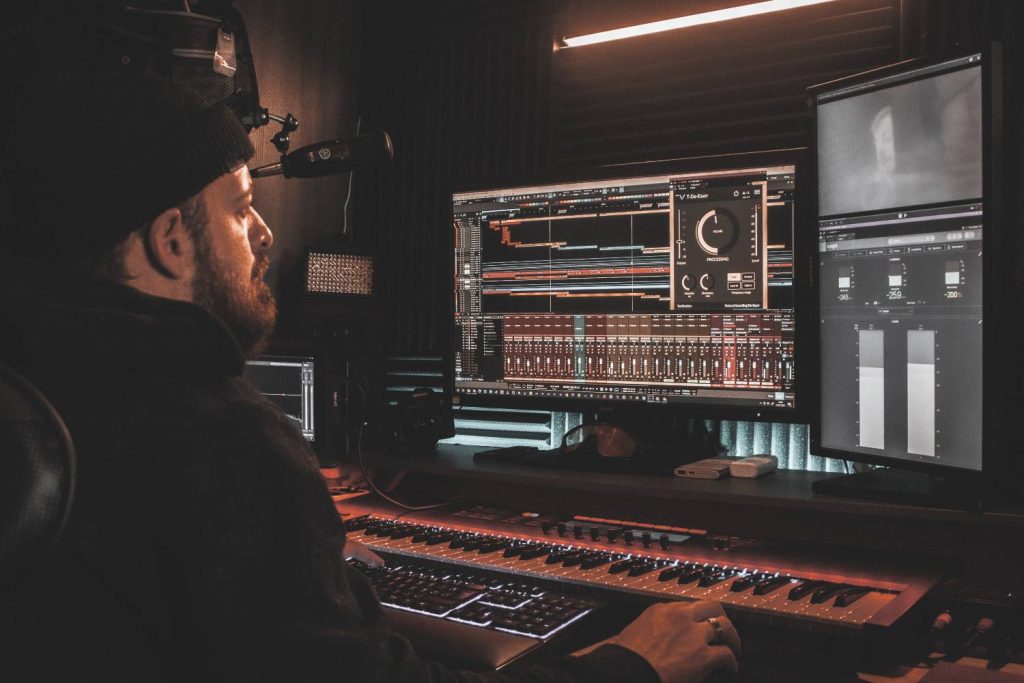A closer look at the tools behind indie trailblazer and king of jangle rock, Mac Demarco.
Mac DeMarco is unlike any other artist working today.
For years, the chain smoking Canadian artist has charmed festivals and theatres worldwide with his distinctive gap-tooth smile, bizarre sense of humour, and immaculately well written songs.
Recording nearly all of his music by himself in his bedroom studio with an array of vintage Japanese guitars, synths and reel-to-reel recorders, Mac DeMarco has created a signature brand of stripped back indie rock and inspired a whole wave of lo-fi, jangle rocking imitators in his wake.
Read all the latest features, columns and more here.
Although his music has evolved into a much more sonically refined version of the laid-back, lo-fi brand of slacker rock he first became famous for, DeMarco’s DIY ethos and knack for songwriting remains integral to his solo output today, and there’s no denying his influence over the last decade of indie rock.
Today, we’re diving deep into the gear of the jizz-jazz king, shedding light on the guitars, amps, pedals and synths used by one of Canada’s best in the business.
Guitars
1960s Teisco Electric Guitar

For years, Mac DeMarco’s main guitar was a thrashed Japanese Teisco electric from the 1960s, which he acquired for $30 when he was a teenager living in Canada.
“I went to this place called Lillo’s,” he said in an interview with The Rumpus.
“It’s a music store, but also half like a pawn shop. They brought me something perfectly crappy. As soon as I played this guitar, I was like ‘wow, this thing is actually a piece of shit’, they were like, ‘Thirty bucks?’, and I was like, ‘sure.'”
While it’s now retired the from live use, the quirky appearance and unique tone of the single pickup Teisco has since become a key part of DeMarco’s signature aesthetic and music in recent years, arguably inspiring a revival in vintage Japanese guitars in indie music.
1970s Fender Stratocaster
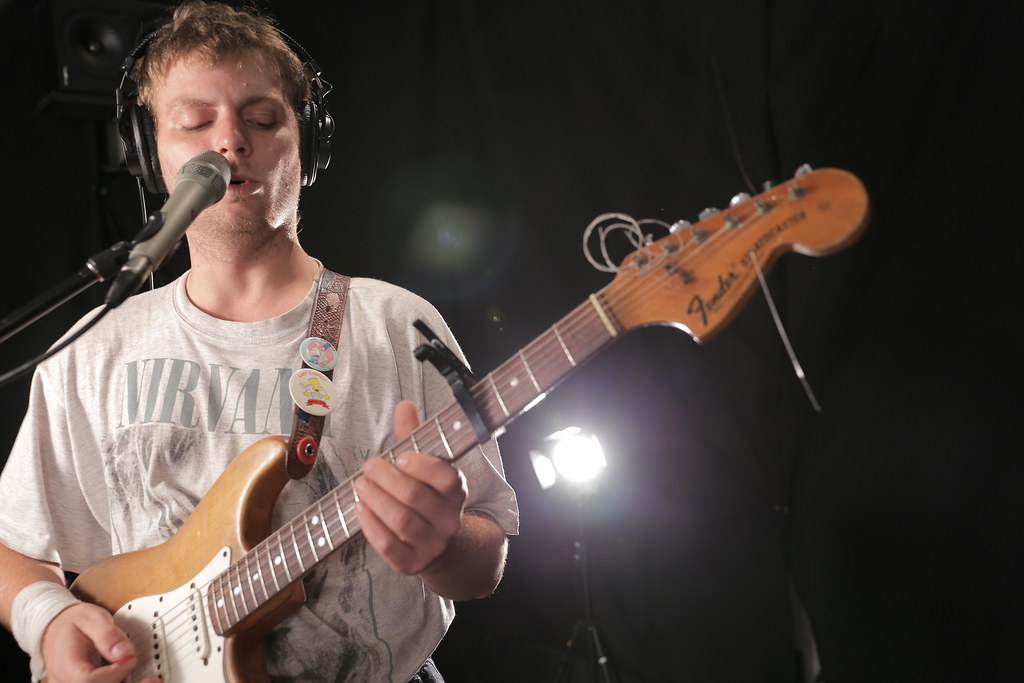
Mac DeMarco’s primary guitar from 2014-16 was a vintage Fender Stratocaster with a Natural finish, which appears to have been made before Fender opted for a three-bolt neck and bullet truss rod design in 1972. However, it met an untimely end when it split in half after being dropped onstage in Paris.
While he did manage replace the guitar with a ’90s Japanese Squier, as seen below, DeMarco acknowledged the heartbreak of breaking his vintage Fender.
“The guilt you feel for snapping a $4,000 guitar is deep,” he said.
Over the past few years, however, Mac’s seemed to have acquired a few more ’70s-era Stratocasters for his live show, including another natural-finished ’74 model which was used heavily on the Here Comes The Cowboy tour.
1960s Fender Mustang
Around the release of 2014’s Salad Days, DeMarco picked up a vintage Dakota Red Fender Mustang, using it live and in the studio for 2015’s Another One.
Gibson J-45 Acoustic Guitar
For his acoustic-heavy 2017 record This Old Dog, DeMarco has been seen using a ’60s model Gibson J-45, fitted with a Sunrise Soundhole Pickup in the performance above of the album’s title track for Pitchfork.
Fender HSS Shawbucker Stratocaster
As part of an endorsement deal with Fender, Mac DeMarco’s live band received a total of 11 HSS Shawbucker Stratocasters – as well as one lonely Telecaster – seen in this picture from DeMarco’s personal Instagram.
Bass Guitars
Teisco / Stagg Bass
While the specifics on this one aren’t exactly 100%, DeMarco’s bass used for recording looks like it’s a vintage Japanese model from the ’70s, judging from the cheap red sunburst finish and vintage hardware and electronics seen on the instrument.
Synths / Keyboards
Since first using a Yamaha DX7 and a Korg Microsampler on the woozy Salad Days cut ‘Chamber of Reflection,’ DeMarco has developed an affinity for synthesisers, collecting several vintage Japanese models which have come to play a key role in his music.
In a 2014 interview with Stingray Music, DeMarco detailed his collection, the majority of which can be seen in the above video documenting the recording of Another One, which has since expanded to include a Fender Rhodes Electric Piano and Moog Realistic MG-1.
“I’ve got a (Sequential Circuits) Prophet 5, we got a (Roland) Juno 60, (Roland) JX-3P, (Yamaha) DX7, (Yamaha) DX100 whatever you want,” he said.
For the release of 2019’s Here Comes The Cowboy, DeMarco began to gravitate towards using Casio synths from the ’80s for a number of synth sounds, which he discusses briefly in the below video with Reverb.
Amplifiers
Roland JC-120
For the mellower tones and acoustic numbers heard across This Old Dog, DeMarco toured with a Roland Jazz Chorus 120, a vintage Japanese combo amp prized by several prominent guitarists for the clarity of the tone provided by the solid state transistor of the amp as well as its classic-sounding stereo chorus.
Fender Vibro-Champ + Roland KC-550
While DeMarco actually uses a Fender Vibro-Champ for studio recording, he explained to Bomb Magazine how he uses the small valve combo in conjunction with a larger Roland KC-550 keyboard amplifier to power the band’s keyboards and act as a stage monitor for himself.
“What I’ve been doing recently is to bring a really big 200-watt keyboard amp, take a really small Fender amp — actually the one we use to record the albums with — and put that on top of the big one,” he said.
“Then I’ll mic that small Fender amp with my own mic, which goes into the keyboard amp, so it’s just a giant cab for the little guy. Then I run all the keyboards on the stage into that big keyboard amp as well.”
Fender Twin Reverb
In addition to using his Roland JC-120, DeMarco often tours with a 60-watt Fender Twin combo amp, which can be seen below.
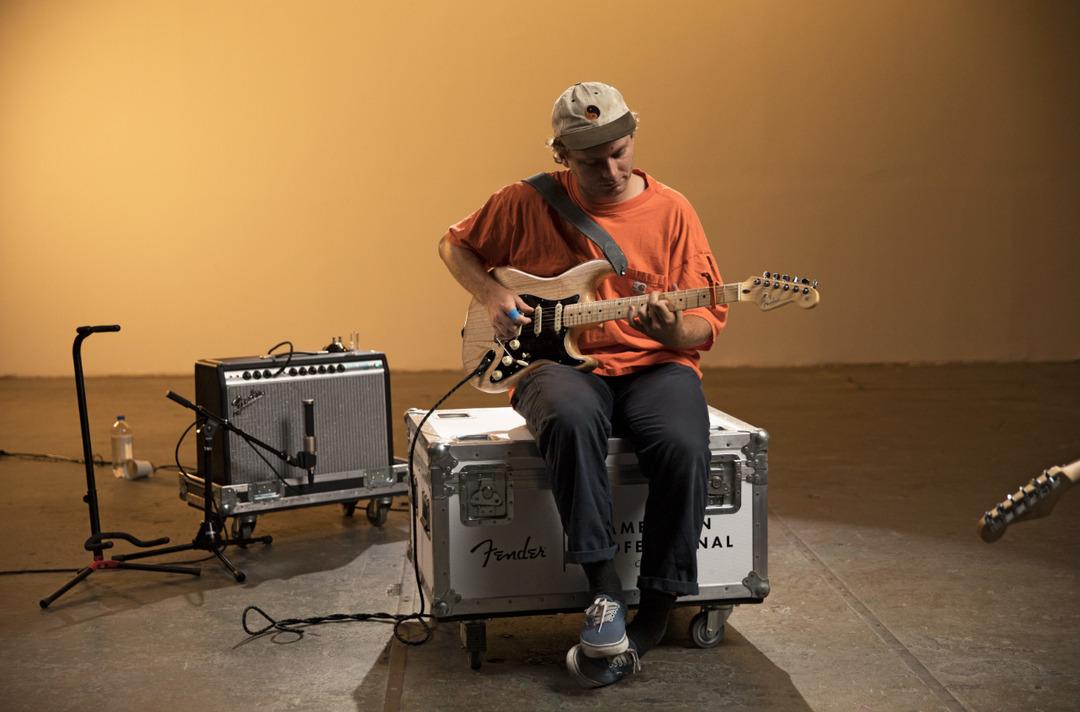
Effects Pedals
Mac DeMarco tends to use a small handful of modulation effects throughout his music, rarely implementing any overdrive or filter effects pedals.
Around 2014, his pedalboard consisted of a MXR Micro-Amp, Boss CE-3 Chorus, Electro-Harmonix Holy Grail Reverb, and a Boss TU-3 tuner, however he’s also recently acquired a EHX Polyphonic Octave Generator for the more ambient effects on songs like ‘Without Me.’
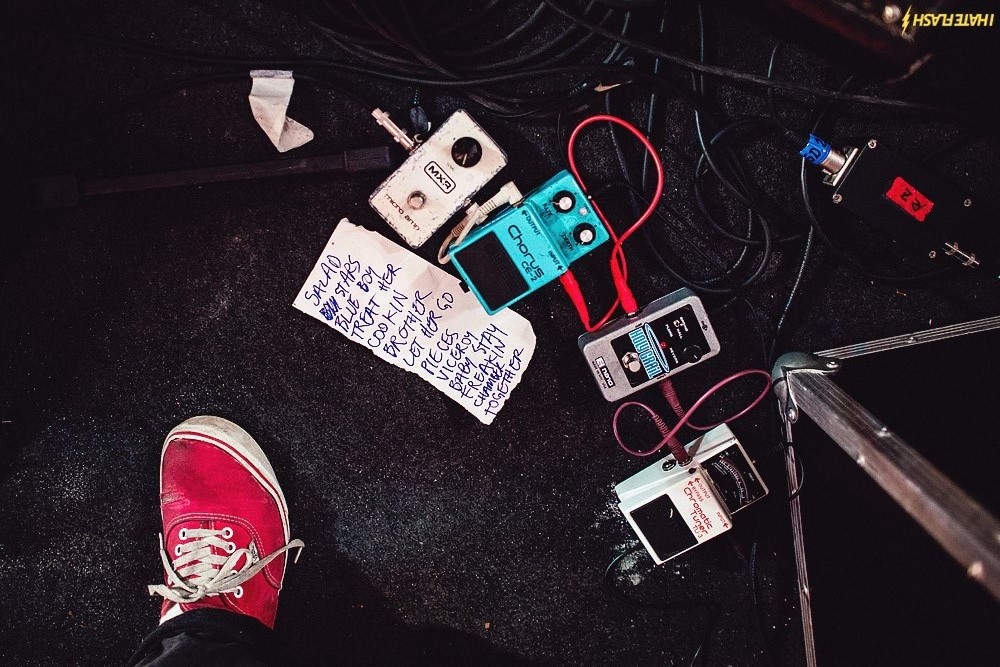
In the aforementioned Reverb video from 2019, DeMarco also notes that he’s expanded his pedalboard for live use, with his current setup consisting of an MXR Carbon Copy Analogue Delay, a Carbon Copy Mini, a TC Electronic Hall Of Fame Mini, TC Electronic Shaker Vibrato, TC Electronic Hyper Gravity Compressor and a JHS Colour Box to emulate the sound of a driven Neve preamp, while a Radial Engineering Bigshot ABY amp switcher is used to flick between amps.
Studio Equipment
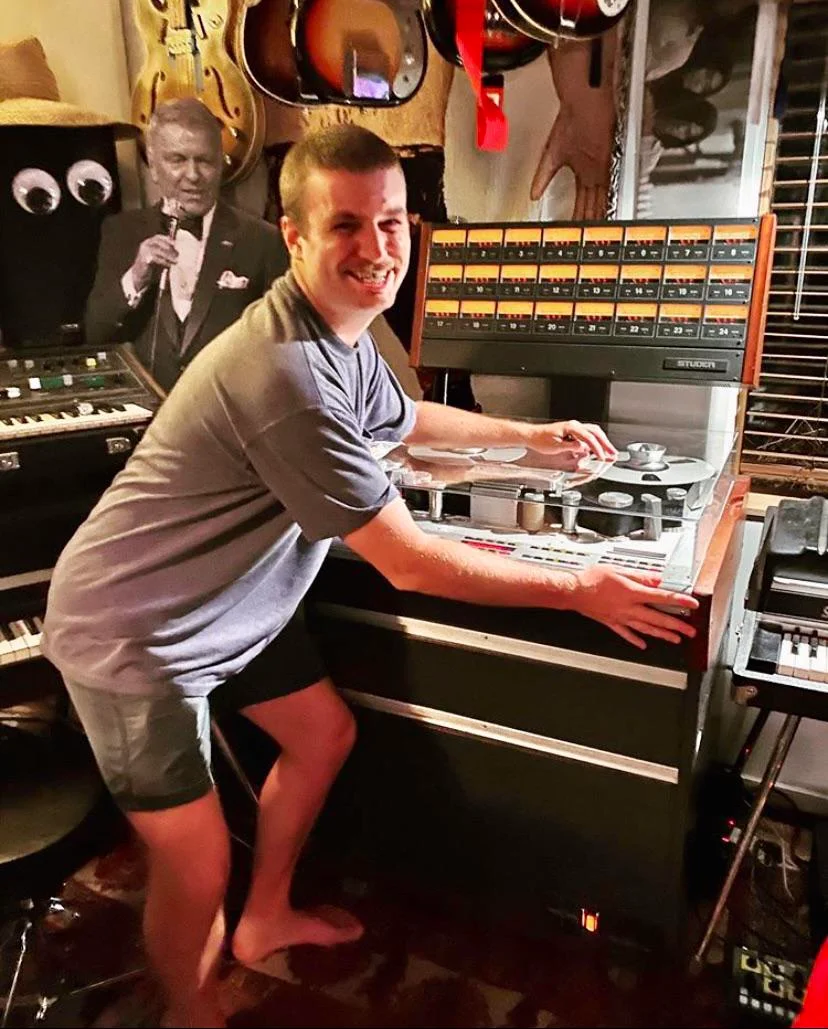
A devotee of analogue and vintage gear, Mac DeMarco has recorded almost all of his music on reel-to-reel tape recorders, namely a Fostex A-8 on 2 and Salad Days and a Tascam 334 for Another One, using an Alesis Micro Limiter and a Roland Space Echo RE-201 to achieve his signature lo-fi sound.
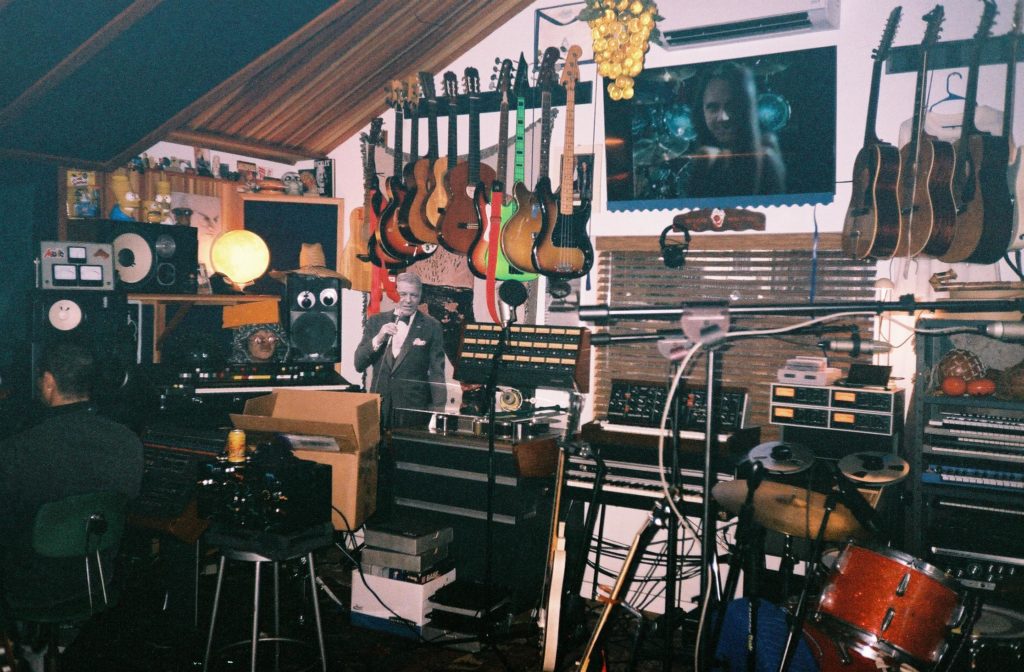
However, for This Old Dog, he recorded the majority of the record with his MacBook (pun intended) and an Apogee Quartet interface.
As explained in this in-depth interview with TapeOp, he uses Ableton with a setup comprised of a Neumann U87 condenser mic, a Royer R-121 ribbon mic and a four channel Neve Portico preamp strip, as well as using a Roland CR-78 drum machine for demos.
Watch Mac DeMarco demonstrate how to build an echo chamber here.






